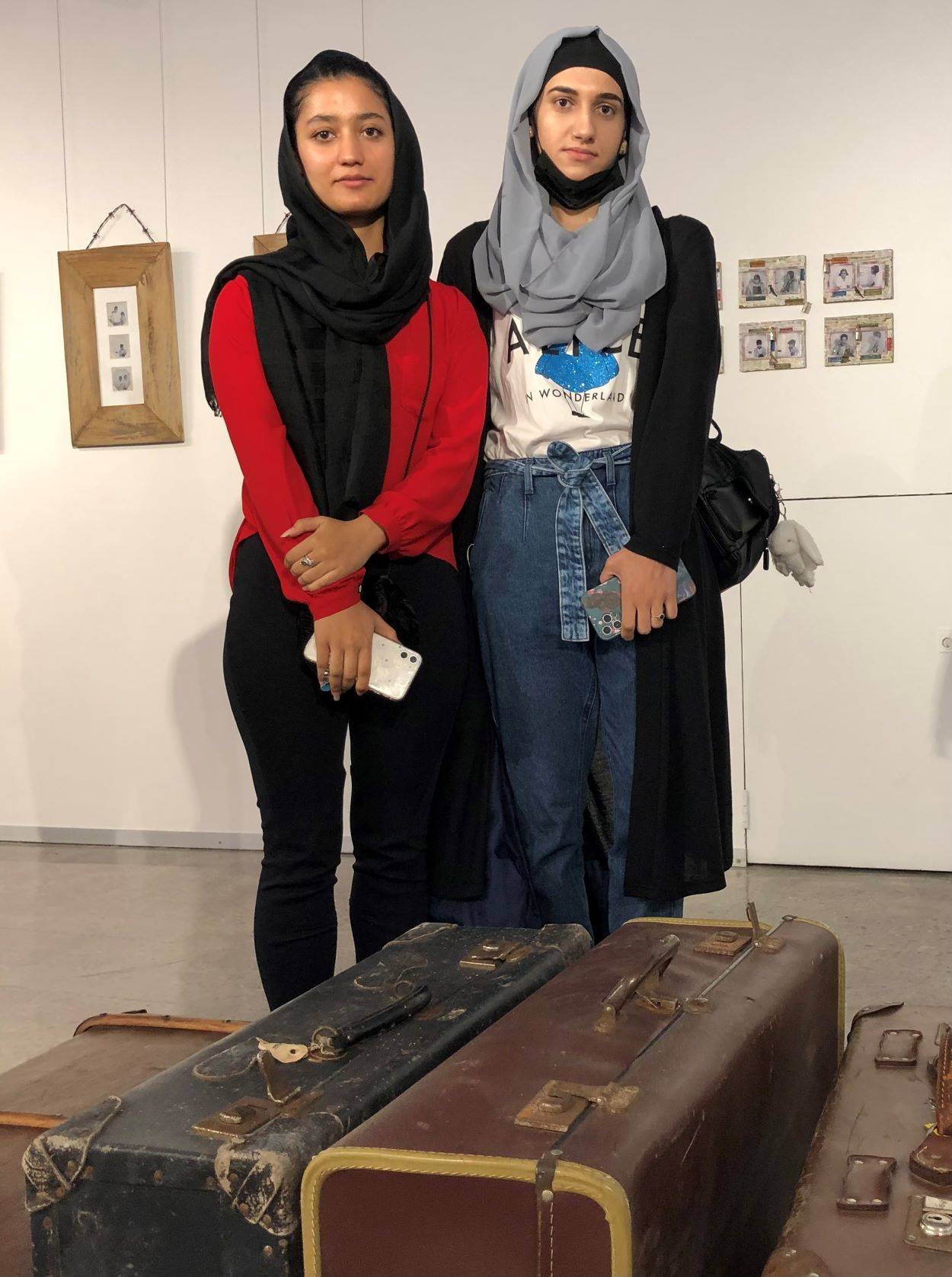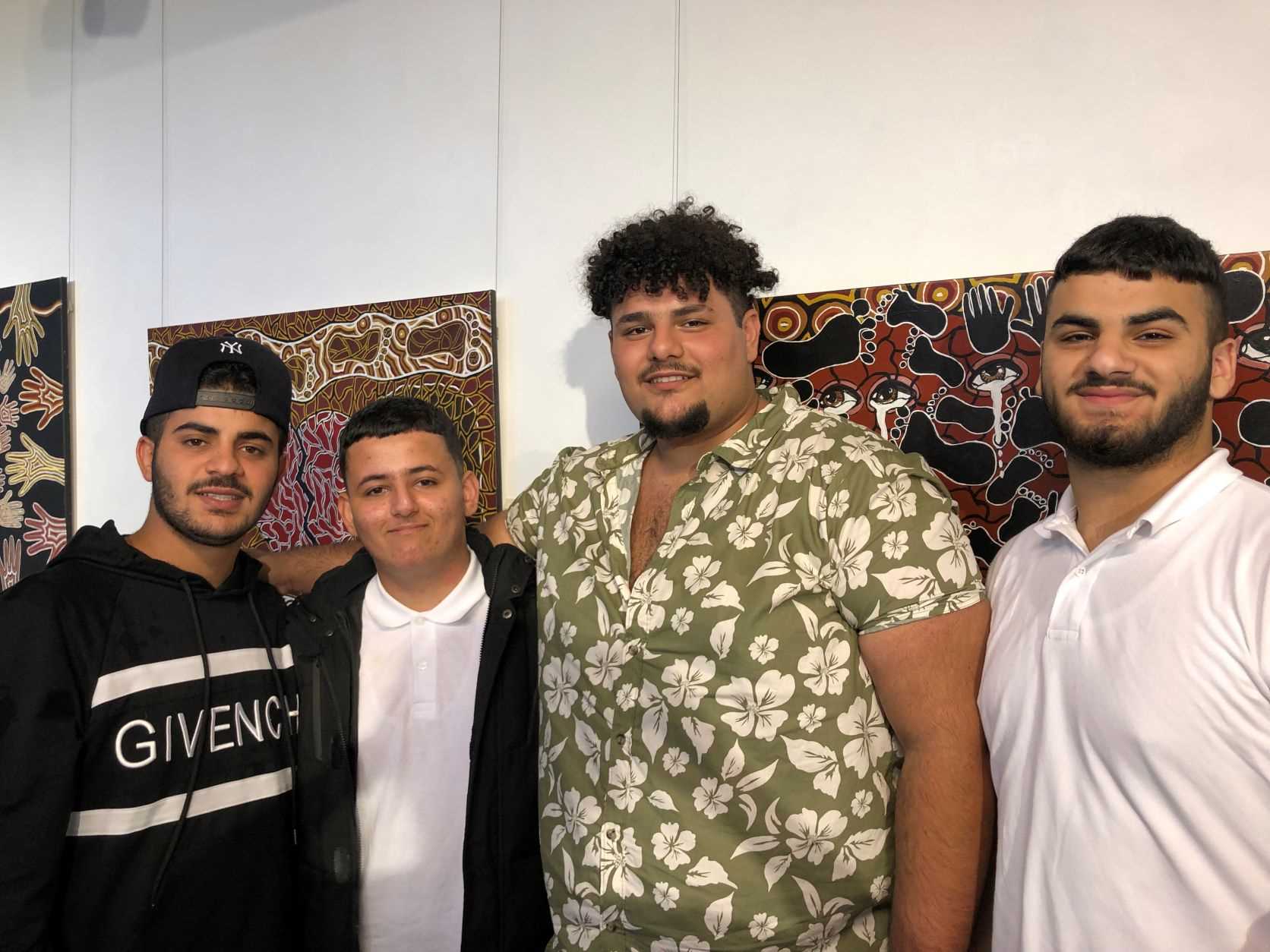Young refugee adults learn about Aboriginal resilience and survival
In the spirit of public pedagogy, young adults belonging to the Hunter region’s refugee cohort, visited the University of Newcastle’s (UoN) Gallery to see the Looking Through Windows exhibition and learn about Aboriginal Australians who grew up and lived on the missions, reserves and fringe camps at places like Tibooburra, Bourke and Brewarrina.
Young men and women from culturally and linguistically diverse (CALD) backgrounds browsed the exhibition which uses different artistic mediums, including oral history, filmmaking, photography, music, performance, as a way of expressing history, culture and knowledge.
The visit was part of a university tour designed to give CALD youth a chance to learn beyond the formal settings of the classroom.

It also provides them with a chance to explore the opportunities available for study, work, and career pathways.
Supported by the UoN’s Centre of Excellence for Equity in Higher Education (CEEHE) and the Multicultural Youth Group (MYG) it provides CALD youth to be ambassadors for their communities as well as providing them with the opportunity to interact with the wider community.
According to Mr Louis Ndagijimana, the Program Coordinator of the Strategy Underpinning Participation and Empowerment for Refugee Backgrounds in Education (SUPERBE) at CEEHE, meeting university academics and other students provides these young adults with a better understanding of the opportunities available for study, work, and career pathways.
[It also helps] “to build resilience, self-belief and self-esteem in the participants,” he said.
Mr Ndagijimana also believes that access to information empowers young adults which ultimately contributes to shaping their journeys to success in a new country.
At UoN’s gallery, students from countries such as Syria and Afghanistan, listened to Dr Lorina Barker from the University of New England, as she spoke about how the racist activities of the Aborigines Protection/Welfare Board affected the lives and families of Aboriginal people.
However, she s tressed that although the negative impact of the Board's policies of segregation, assimilation, child removal and wage withholding are still visible and remembered today, the exhibition was more about resilience and survival.
tressed that although the negative impact of the Board's policies of segregation, assimilation, child removal and wage withholding are still visible and remembered today, the exhibition was more about resilience and survival.
She told the participants that the exhibition was a reflection of remembering and acknowledging this impact and, importantly, truth-telling and the re-writing/telling of history which puts Aboriginal people front and centre of the story.
One of the young adults, Mobin Azami, said this was the first time he’d heard about Indigenous Australians.
“It’s all new for me, this learning about different Australian cultures,” he said.
Contact
- Jacqueline Wright
- Phone: 02 4921 7408
- Email: jacqui.wright@newcastle.edu.au
Related news
- University proposes new student accommodation at Callaghan Campus
- University proposes new student accommodation at Callaghan Campus
- Nine Newcastle teams secure $5.4m in ARC Discovery grants to unearth new knowledge
- University of Newcastle commemorates graduate excellence
- Community collaboration takes flight in bird opera workshop
The University of Newcastle acknowledges the traditional custodians of the lands within our footprint areas: Awabakal, Darkinjung, Biripai, Worimi, Wonnarua, and Eora Nations. We also pay respect to the wisdom of our Elders past and present.